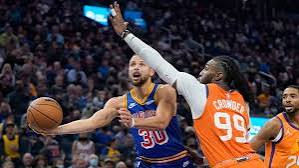The Oklahoma City Thunder emerged victorious in a thrilling Game 4 showdown against the Indiana Pacers, thanks in large part to a dominant performance by their All-Star guard, Shai Gilgeous-Alexander. The win not only evened up the series but also showcased the growth, resilience, and determination of a young Thunder team that continues to exceed expectations. Below are five key takeaways from this crucial game that could shape the rest of the series.
Shai Gilgeous-Alexander once again proved why he’s considered one of the NBA’s brightest rising stars. In Game 4, he delivered a masterclass in leadership and scoring, finishing with a game-high point total that powered OKC to victory. Whether he was slicing through the defense, creating opportunities in isolation, or drawing fouls in clutch moments, Shai’s poise and confidence were unshakable.
What sets Gilgeous-Alexander apart is not just his ability to score but his basketball IQ. His decision-making under pressure was elite. When double-teamed, he found open teammates; when isolated, he broke down defenders with surgical precision. His mid-range pull-up jumpers and crafty finishes at the rim consistently kept the Pacers guessing.
His leadership has also matured significantly. Though just 25 years old, he plays with the calm and assurance of a seasoned veteran. With the game hanging in the balance, Shai demanded the ball and delivered — not just with points, but with tone-setting plays on both ends of the floor.
While Shai was undoubtedly the centerpiece, this was a complete team effort. Key contributions from Jalen Williams, Chet Holmgren, and Josh Giddey ensured that the Pacers couldn’t zero in on just one player. Holmgren was especially vital on defense, protecting the rim with his length and altering multiple shots that could have shifted the momentum.
Jalen Williams continued to thrive in his role as a secondary scorer and playmaker, spacing the floor and hitting timely jumpers. Meanwhile, Giddey’s court vision and rebounding helped the Thunder stay competitive during stretches when Shai was on the bench.
The Thunder bench also played an important role. Players like Isaiah Joe and Aaron Wiggins brought energy and defensive intensity, showing that OKC’s depth is more than capable of matching up with Indiana’s second unit. Their hustle plays, second-chance rebounds, and timely three-point shooting helped OKC maintain leads and build momentum throughout the game.
One of the pivotal differences in Game 4 was Oklahoma City’s defensive commitment. The Thunder turned up the intensity on that end of the court, pressuring Indiana’s ball handlers and denying easy looks from beyond the arc. Tyrese Haliburton, the Pacers’ floor general, had a difficult time establishing rhythm due to OKC’s constant pressure and aggressive switching.
The Thunder made smart adjustments, taking away the passing lanes Haliburton usually exploits. This forced Indiana into a more isolation-heavy game, where they were far less effective. As a result, players like Myles Turner and Buddy Hield were often forced to create their own shots rather than playing within their usual fluid offense.
Moreover, Indiana struggled with turnovers and poor shot selection under pressure. The Thunder capitalized on these mistakes, turning defense into quick offense and swinging the momentum in their favor with fast-break points and transition threes.
Another major factor in the Thunder’s Game 4 win was their control over the tempo. The Pacers are typically known for their uptempo offense, but OKC flipped the script by pushing the pace selectively and playing smart, efficient basketball.
Rather than getting caught up in a fast-paced back-and-forth, the Thunder managed the clock well and chose their transition moments carefully. When they pushed, they did so with purpose. When the game slowed down, they executed in the half-court with discipline. Shai’s ability to slow the game down and create in the mid-range was crucial in these moments.
Controlling the tempo kept Indiana from playing their preferred style of run-and-gun offense, which often relies on quick threes and open lanes in transition. By taking that away, the Thunder forced Indiana to operate in unfamiliar territory.
With the series now tied, this win by the Thunder has dramatically shifted the narrative. After dropping Game 3, OKC entered Game 4 under pressure to respond. Not only did they respond, but they also delivered one of their most well-rounded performances of the postseason so far.
Confidence is now building in the Thunder locker room. They’ve proven they can win tough games on the road and that their young core can handle playoff intensity. Perhaps most importantly, they’ve taken a psychological edge — demonstrating that they can contain the Pacers’ high-powered offense while creating consistent scoring opportunities of their own.
For Indiana, this loss is a wake-up call. Adjustments will be needed — both in how they defend Shai Gilgeous-Alexander and how they initiate their offense under pressure. Coach Rick Carlisle will likely look to diversify Indiana’s attack in Game 5 and demand more urgency on the defensive end.
Game 4 was a defining moment in what’s turning into an electrifying playoff series. Shai Gilgeous-Alexander’s star continues to rise, and the Thunder are proving that their youth is not a weakness but a source of energy and fearlessness. If OKC can replicate this balance of star power, team effort, and defensive discipline in the games ahead, they could very well take control of the series — and maybe even surprise a few more people on their playoff journey.

